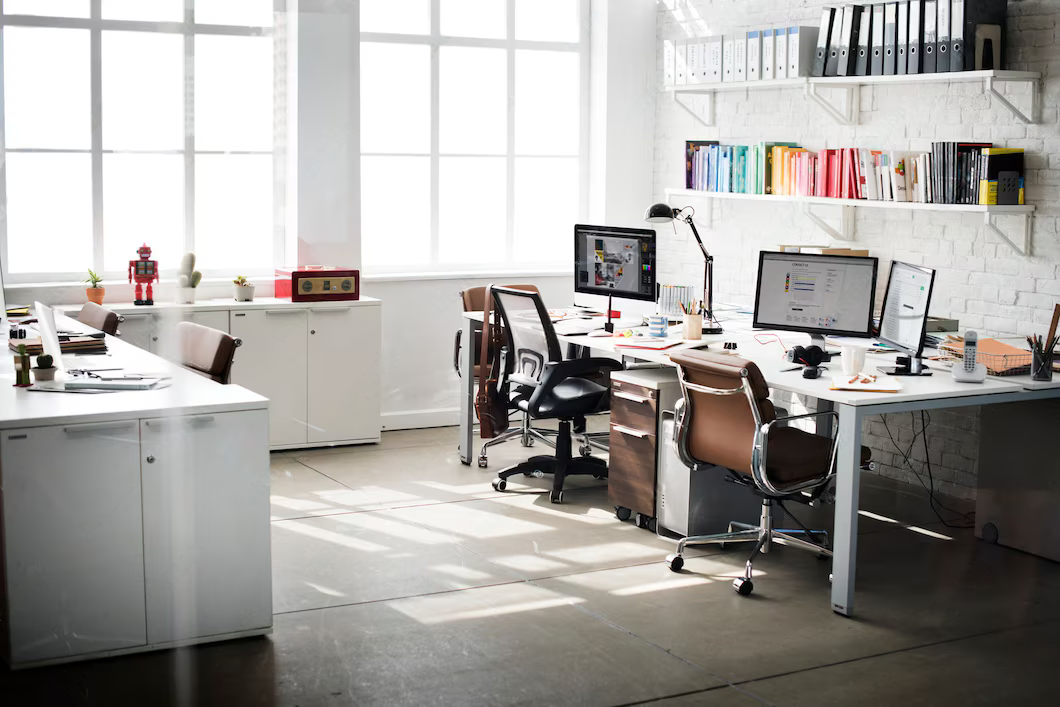Ergonomics in Office Design: Why It Matters
In today’s fast-paced professional environment, the physical workspace has a significant impact on employee well-being, productivity, and long-term health. Ergonomics in office design is no longer a luxury—it’s a necessity. The term refers to the science of designing workspaces to suit the capabilities and limitations of the people who use them. A well-designed ergonomic office reduces physical strain, enhances comfort, and ultimately leads to improved efficiency and satisfaction among employees.
Businesses that prioritize ergonomics are better positioned to reduce workplace injuries, especially those related to repetitive movements, poor posture, and improper workstation setups. Common problems such as back pain, eye strain, neck stiffness, and wrist injuries can all be mitigated through thoughtful design. Simple changes like adjustable chairs, sit-stand desks, and properly positioned monitors can drastically transform how employees interact with their workspaces.
The Role of Furniture and Layout in Ergonomics
One of the most vital aspects of ergonomic office design is the proper arrangement of furniture and equipment. Chairs should offer lumbar support and adjustability in height and armrests. Desks must provide sufficient space to accommodate work essentials without causing clutter or restricting movement. Monitor screens should be positioned at eye level and at an arm’s length away to prevent neck strain and reduce visual fatigue. Task lighting plays a crucial role as well, minimizing glare and enhancing focus in specific work areas.
Incorporating movement into the workday is another essential ergonomic strategy. Prolonged sitting is now recognized as a health hazard. Height-adjustable desks encourage workers to alternate between sitting and standing, promoting better circulation and reducing fatigue. Additionally, arranging collaborative spaces and walkable layouts encourages physical activity throughout the day, enhancing both mental alertness and employee engagement.
Environmental Factors That Influence Ergonomic Design
Beyond furniture and layout, acoustics and air quality also influence ergonomic performance. A quiet workspace helps minimize distractions and improves concentration, while proper ventilation ensures a steady supply of fresh air, reducing headaches and boosting cognitive function. Even temperature control and access to natural light play roles in shaping a healthy and comfortable work atmosphere.
Another core component of effective ergonomic design is adaptability. Every employee is different—height, weight, dominant hand, vision, and mobility all affect how a space should function. Workstations that can be adjusted to individual preferences empower workers to customize their environments, which leads to greater comfort and reduced injury risk. It’s here that office interior design tips come into play, helping to guide thoughtful decisions about layout, materials, and functionality in a people-centric manner.
The Business Impact of Ergonomic Design
Ergonomic office design also supports mental well-being. A space that feels welcoming and physically comfortable helps reduce stress and supports positive employee morale. When workers feel cared for, they are more likely to be engaged and committed, leading to improved retention and performance. Ergonomics is, therefore, both a health measure and a business strategy.
In high-growth corporate hubs like Gurgaon, businesses are increasingly turning to experts who specialize in creating ergonomic spaces. Experienced office interior designers in Gurgaon understand how to balance aesthetics with functionality, blending modern design elements with ergonomic best practices. They assess the workflow, employee habits, and brand identity to deliver customized environments that not only look impressive but support long-term performance and health.
Key Ergonomic Design Strategies to Implement
Creating a comfortable and efficient workspace starts with smart ergonomic design. By aligning work environments with the physical needs of users, ergonomic strategies help reduce fatigue, prevent injury, and boost productivity. Below are essential ergonomic design practices to implement for a healthier and more effective workspace.
- Use adjustable seating with proper back support
- Position monitors at eye level and reduce screen glare
- Opt for sit-stand desks to encourage movement
- Introduce natural lighting and control artificial light
- Reduce noise with acoustic panels or smart layout design
- Provide breakout areas for rest and informal collaboration
- Ensure proper air flow and thermal comfort
Creating an ergonomic office is a long-term investment in the health, happiness, and productivity of your team. When executed thoughtfully, it transforms a basic workspace into a high-functioning, people-first environment that supports both physical and mental well-being.

